The Unpredictable Alpine
By Jewell Lund
“Should we take bivy gear?”
I peered up at the dauntingly sheer granite face of Mt. Huntington, the scale of which overwhelms base camp on the Tokositna Glacier. Standing so close to the mountain, I knew the colossal face was foreshortened. Traversing the systems all the way across the West Face could take a few hours, or more than a day. Who knew?
“Um. Bivy gear could be nice?”
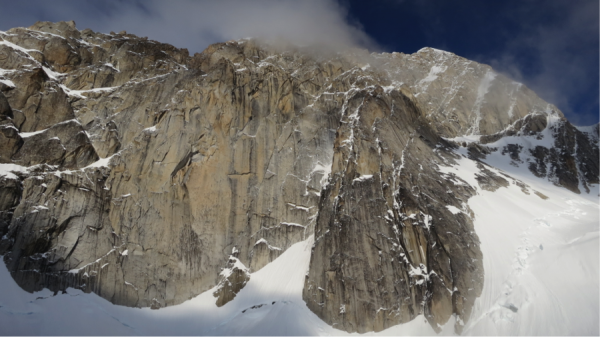
This conversation has actually started via email a year ago. A friend had connected Chantel Astorga and me, knowing our mutual interest in alpine climbing. Pictures and ideas were bandied about regarding Mt. Huntington in the Alaska Range. We’d heard rumors of stellar rock quality and nightmarish corniced ridges, and most importantly promises of adventure. In November 2013, Chantel and I were in the same town and finally chatted in person. It was clear that we were inspired by similar objectives, and we decided to try climbing together. Mt. Huntington 2014 was written in the books.
Relatively new to alpine climbing, though an avid rock and ice climber, I’m amused by how much planning and preparation alpine requires. The path of a particular goal, from inception to fruition, can take months and sometimes years. Creating training plans, sticking to training plans, researching an area, email correspondence with people who know the area, purchasing flights to a region, purchasing additional flights into a specific mountain range, creating gear lists, getting gear we don’t have, making decisions on meals plans and satellite phones, working extra hours to pay for the gear and flights and satellite phones… It is exhausting even just to summarize the preparation process, although it is unequivocally worth it. Perhaps this process is even a requisite, to prepare you for all you can’t predict in alpine climbing.
Who can predict the weather?
In early May, Chantel and I flew into base camp at Mt. Huntington, and within 12 hours were engulfed in a 5-day storm. Luckily we had flown in the same day as two other climbers, Mark and Kevin. They were excellent company, and we didn’t even think to read our novels or play Bananagrams for all the great conversations. We did, however, polish off a pound of coffee rather quickly, which did induce a sort of panic. Luckily, within a few days, the snow abated and we began to study the notorious west face.
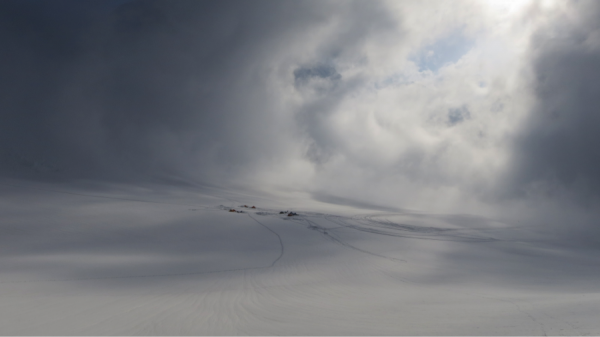
Who can predict what will inspire?
Directly in front of basecamp, the beautiful couloir of the Colton-Leach route splits the West Face. The top of this couloir connects with a traversing system of rock, ice and snow that spans the entire face, creating an unlikely and exposed path to the summit snowfield. Chantel and I had painstakingly researched a route called Phantom Wall, an aesthetic and long route on the mysterious south face of Mt. Huntington; thus we knew almost nothing about the Colton-Leach. Once it caught our attention, we reasoned that it would be wise to see how we climbed together on a route before trying the Phantom Wall. Perhaps that route could be the Colton-Leach?
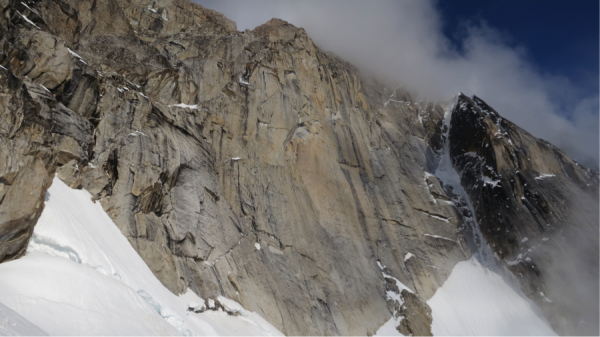
Who can predict how it all plays out?
We began climbing in the early morning, and made great time climbing ice to the top of the couloir. As we began traversing the immense West Face, temperatures rapidly warmed, dangerously loosening the snow and rock around us. We opted to build a bivy spot on the snow slope we were on, and continue climbing when the temperature had dropped, making travel safer. Our snow slope may be the most stunning spot I’ve ever pitched a tent, and we’re lucky it was large enough to fit a tent (barely).
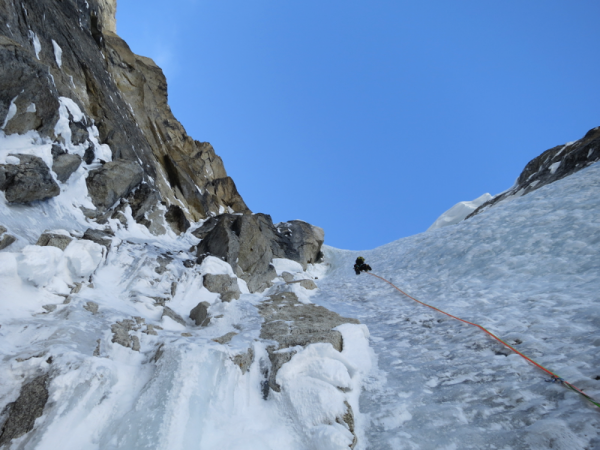
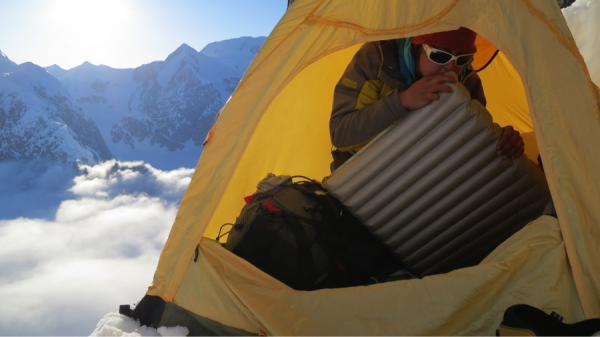
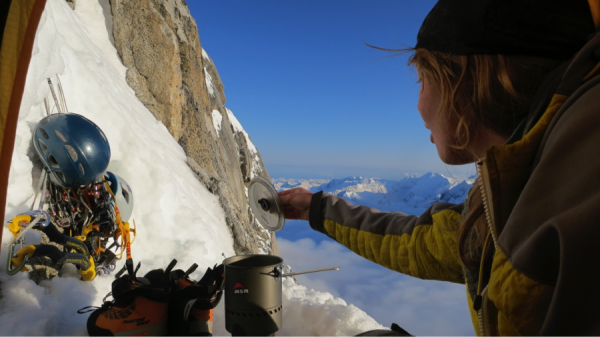
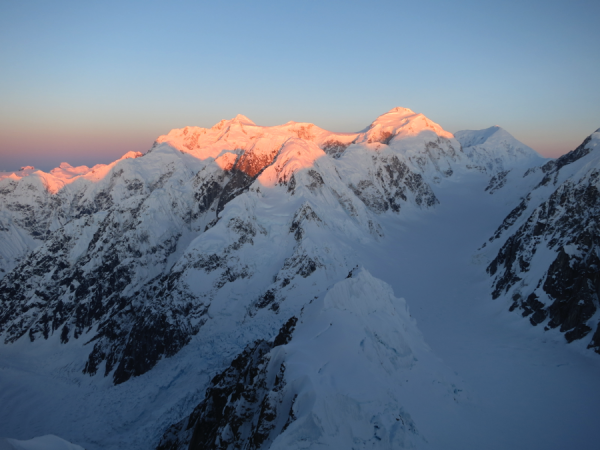
The next day dawned beautifully, and we continued our journey. We traversed narrow snow fingers, climbed through striking ice formations and up exposed rock toward the summit. Moving forward without much knowledge of the path ahead, we enjoyed the moment we were in, discarding past and future. Before we knew it we were on the summit, relishing in the remarkable peaks surrounding us.
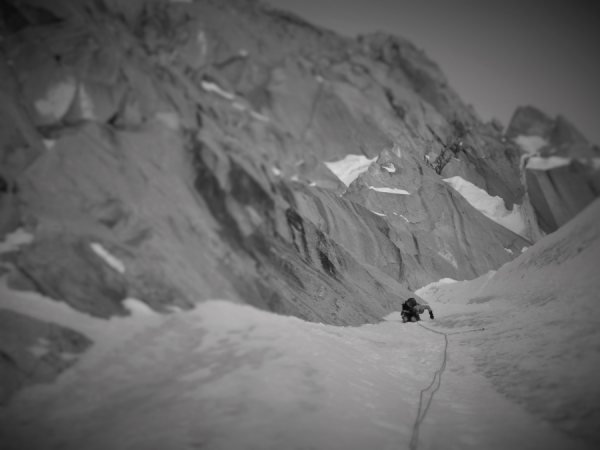
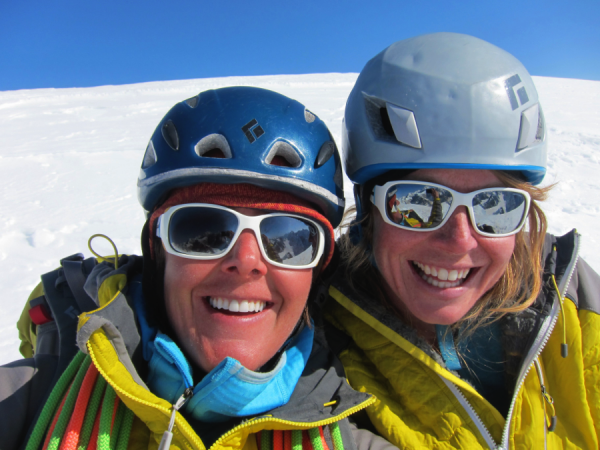
We began the long journey down, finally making it back to base camp late that evening. Chantel is a master chef and whipped up gourmet quesadillas to wrap up the whole fantastic journey. We slept hard, ate lots, and recovered. Within a couple days, we felt ready to go take a look at the Phantom Wall.
But as we did from the ridgeline separating the west and south faces, we witnessed firsthand the havoc that the warm spring temperatures had wreaked on the Phantom Wall. As daytime temperatures increased and the nighttime freeze shortened, a great deal of debris was loosening and trundling down the wall. The objective hazard of the entire south face was evident, and we knew it would be unsafe to climb the Phantom Wall.
Our unanticipated experience on the Colton-Leach had planted a seed of appreciation for the unfamiliar in our minds. As we let go our long-sought goal of the Phantom Wall, we sat down with a photo of Mt. Huntington, and another enigmatic route up the west face struck a chord with us: Polarchrome. Curiosity and inspiration captured our minds, and before we knew it we were packing our bags… But climbing Polarchrome is another story altogether.
With technology at our fingertips, we are so accustomed to acquiring information almost effortlessly. The mountains remind us that we can still venture into the unknown.
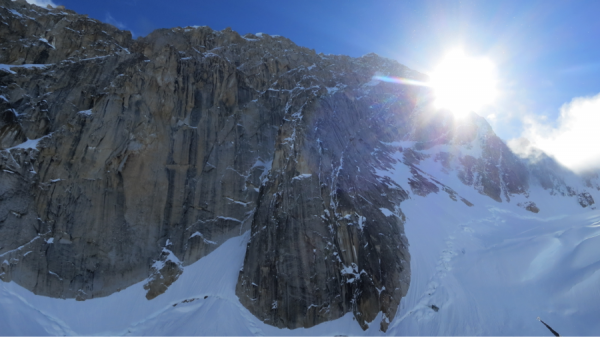
This trip would not have happened without support and stoke from the American Alpine Club, MSR, Outdoor Research, Beal Ropes, CiloGear, Scarpa, and all of our supportive family and friends. Y’all are great, thank you!
BIO
As a coffee roaster in Salt Lake City, on a given day you can find Jewell smelling of coffee and showing signs of over-caffeination. Or maybe it’s from excitement about upcoming climbing plans? An avid rock, ice and alpine climber, Jewell remains inspired by the mountains, which have taught her the joy of living for passion, the poignancy of being intimate with fear, and the gift of deep-rooted climbing partnerships. She looks forward to continued adventure and learning in the hills.
